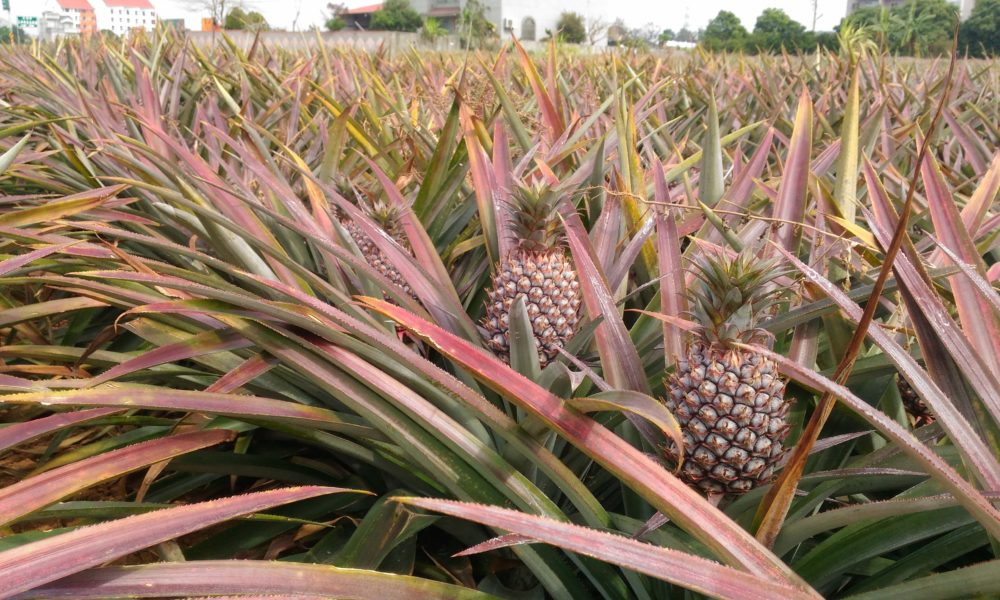
How Pineapple Waste Is Being Woven into a Greener Future
Turning farm leftovers into leather alternatives, yarn, and plates — one leaf at a time
Imagine the crown of a pineapple: prickly, green, and usually tossed aside after the fruit is eaten. What if those leaves could be a seed for something beautiful and sustainable: textiles, tableware, even durable “leather” alternatives? That’s exactly the story unfolding today, where what used to be agricultural waste is being turned into products that look good, do good, and help local communities.
A 500-Year-Old Tradition Gets a Modern Revival
Pineapple-leaf textiles aren’t new. In the Philippines, skilled weavers have turned long pineapple leaf fibers into fine, lace-like cloth called piña for centuries. Historical accounts place the development of piña fabric as early as the 1500s, growing into a prized luxury textile by the 17th and 18th centuries. These delicate fabrics were used for traditional garments and were prized for their translucent, shimmering quality.
Carmen Hijosa and the Birth of Piñatex

Dr. Carmen Hijosa, winner of the Arts Foundation Awards 2016 in the category of Material Innovation. Photo by Piñatex, CC BY-SA 4.0 license, via Wikimedia Commons.
Fast-forward to the 21st century: Dr. Carmen Hijosa, a leather industry consultant who spent time in the Philippines, spotted a modern opportunity in an old material. She founded Ananas Anam and developed Piñatex, a non-woven textile made from pineapple leaf fibers. It’s an ethical, plant-based alternative to animal leather. Her work grew from field observations and design research into an international enterprise that links design, material science, and rural livelihoods.
Turning Waste into Value
Why it matters: pineapple farming produces enormous quantities of leaf waste. Around the globe, millions of tons of pineapple leaves are discarded each year, often burned or left to rot. The result is both a lost resource and an environmental burden. Dr. Hijosa’s approach captures that waste stream and turns it into value. Fibers are extracted from leaves that would otherwise go unused, creating income and reducing pollution.
From Leaf to Piñayarn: How the Process Works
Here’s a simplified view of the process from field to product:
- Collection: Farmers gather leaves after the pineapple harvest.
- Decortication: A decorticator machine extracts long cellulose fibers from the leaf.
- Washing and drying: The fibers are cleaned, to remove chlorophyll and plant gum, and dried, with leftover biomass returned to the soil as compost.
- Processing: The fibers are softened and turned into a non-woven mesh.
- Finishing: Depending on the end product, the material is coated for durability (Piñatex) or spun into Piñayarn for knitting and weaving.
This process creates a soft, workable material that can replace animal-based leather and petroleum-based synthetics.
Supporting Farmers and Local Economies
The human story is equally important. Ananas Anam works with local and independent farmers and cooperatives to source pineapple leaves. This partnership model brings income to rural families who otherwise had few options for this leftover biomass. Reports note collaborations with hundreds of Filipino farming families, giving them paid work harvesting leaves and performing early-stage processing instead of burning or abandoning the material. That link between urban design innovation and rural livelihoods is exactly the kind of circular-economy thinking environmentalists and social entrepreneurs celebrate.
Beyond Leather: Plates, Boards, and More
Researchers and manufacturers are exploring pineapple-fiber materials not only as leather alternatives but also for plates, jackets, shoes, car interiors, handbags, and even composite boards. It’s suitable for basically any application where a plant-based, low-impact material could replace fossil-fuel-derived plastics or resource-heavy materials. Piñayarn opens the door to knitted and woven items that are fully plant based, recyclable and biodegradable, which matters as the textile industry seeks lower-impact fiber choices.
Why This Is Good News for the Planet
This innovation is a triple win:
- Environmental win: Reduces waste, prevents burning, and lowers emissions.
- Economic win: Provides income to smallholder farmers and rural communities.
- Cultural win: Preserves and modernizes centuries-old knowledge of plant-fiber textiles.
Turning what was once waste into wearable, usable, and beautiful things feels like the kind of small revolution we can all root for – one pineapple leaf at a time.

